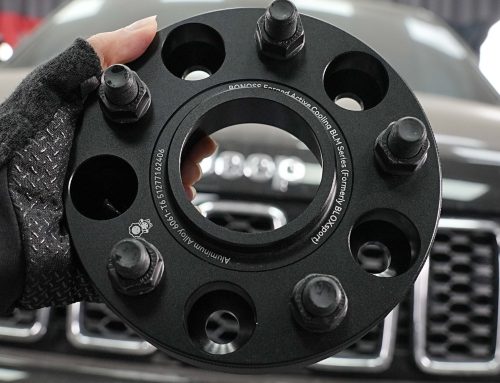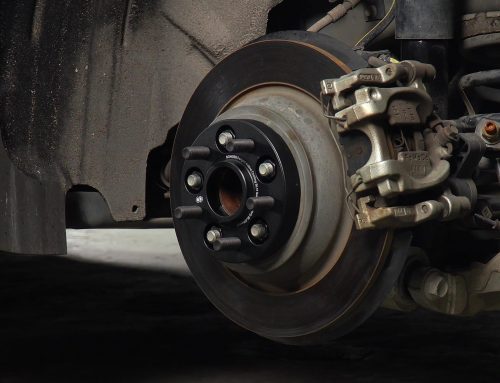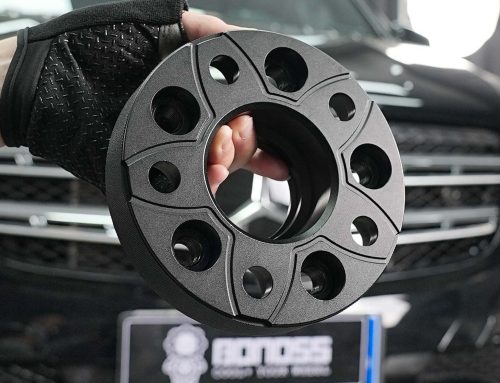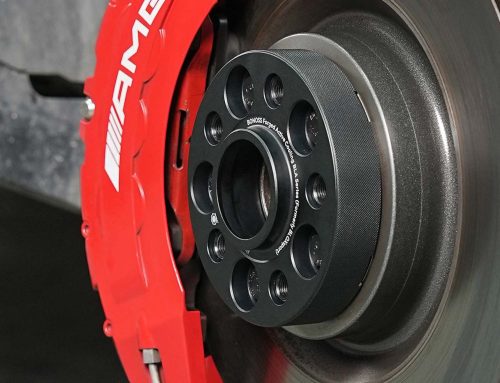The wheel spacer is an efficient and advantageous component when talking about suspension clearance problems. You can get more fun trying to get just the right look for your car, truck, or SUV. Wheel changing may be your first step. You find the right wheels, but they come with the wrong offset. They sit too far in or too far out. Or maybe you would like to add big brake kits, but the wheel rubs the big caliper. That doesn’t look right and absolutely not safe. What can you do? Spending thousands to get the custom wheels you want in the size you need, or cutting up the factory wheel to fit a big brake caliper? No, wheel spacers will be your most cost-effective option. How to choose wheel spacers for your vehicle? Here are some things may help you:
Slip-on Wheel Spacers vs. Bolt-on Wheel Spacers
Slip-on wheel spacers are bolted to the vehicle hub and fastened by extended wheel bolts. European cars usually use wheel lug bolts to secure the wheels to the hubs. In this case, slip-on style wheel spacers will be your most suitable choice. To ensure a proper installation, you will also need to use new extended wheel bolts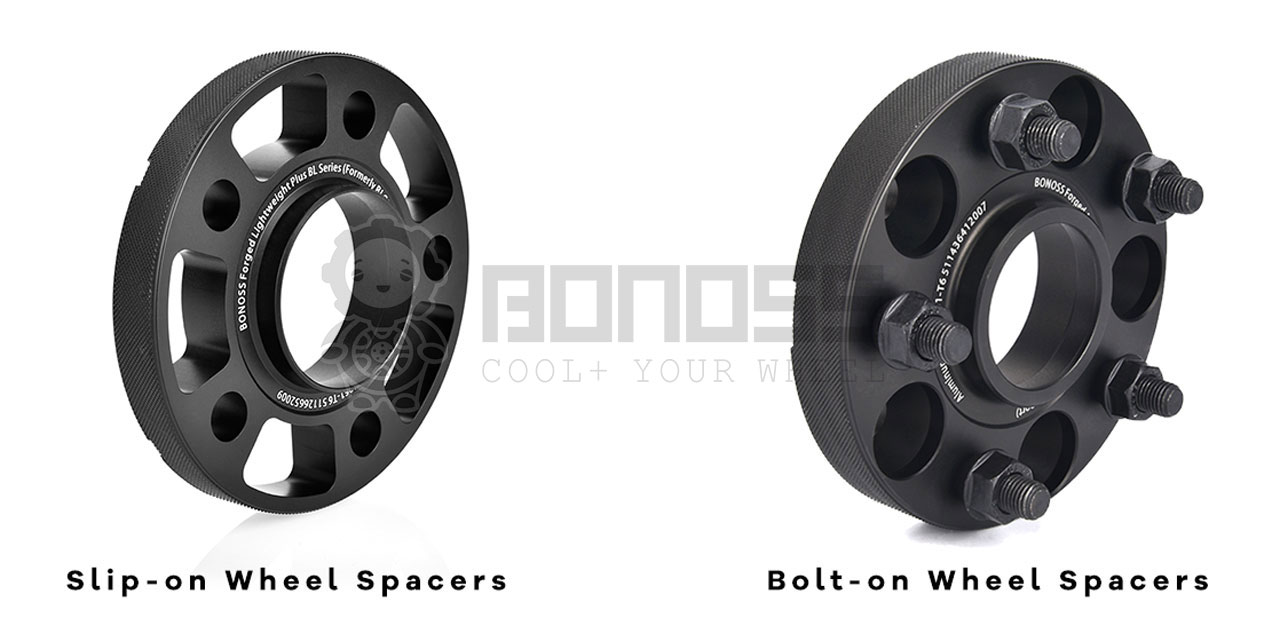 which are longer than the stock ones by the thickness of the wheel spacers. On the other hand, Bolt-on wheel spacers bolt to the vehicle hub with the matching studs and provided lug nuts. The wheel is then secured to the studs of the wheel spacer using the stock lug nuts. American and Asian cars typically use lug nuts to secure the wheels. Under this circumstance, your easiest solution is to go with bolt-on style wheel spacers that come with their own lug studs and nuts. The other solution is to use slip-on wheel spacers with longer wheel studs. However, the installation may be a little difficult.
which are longer than the stock ones by the thickness of the wheel spacers. On the other hand, Bolt-on wheel spacers bolt to the vehicle hub with the matching studs and provided lug nuts. The wheel is then secured to the studs of the wheel spacer using the stock lug nuts. American and Asian cars typically use lug nuts to secure the wheels. Under this circumstance, your easiest solution is to go with bolt-on style wheel spacers that come with their own lug studs and nuts. The other solution is to use slip-on wheel spacers with longer wheel studs. However, the installation may be a little difficult.
The Proper Thickness of Wheel Spacers
A quick glance at the various spacers on the market reveals that thicknesses vary from about 1/8″ all the way up to 2″ or more. You need to be absolutely certain that you are getting the most appropriate size. If you have a straight edge metal ruler, place the straight edge on the outermost part of the rims where the wheel comes closest to the fender (preferably the top), then, measure from the outside wheel to the straight edge. This distance is the size spacer you will need to achieve the look that flushes or nearly flushes with the fender. Presuming that you had clearance issues at the brake, you want to add only enough thickness to clear the caliper. Then the thickness depends on the increased height of the caliper. If it is the ET/offset issues, then the thickness depends on the change amount, for example, your stock wheels’ ET is 27, you would like to install an ET 39 wheel, then you need 12mm thick spacers to correct the wrong offset.
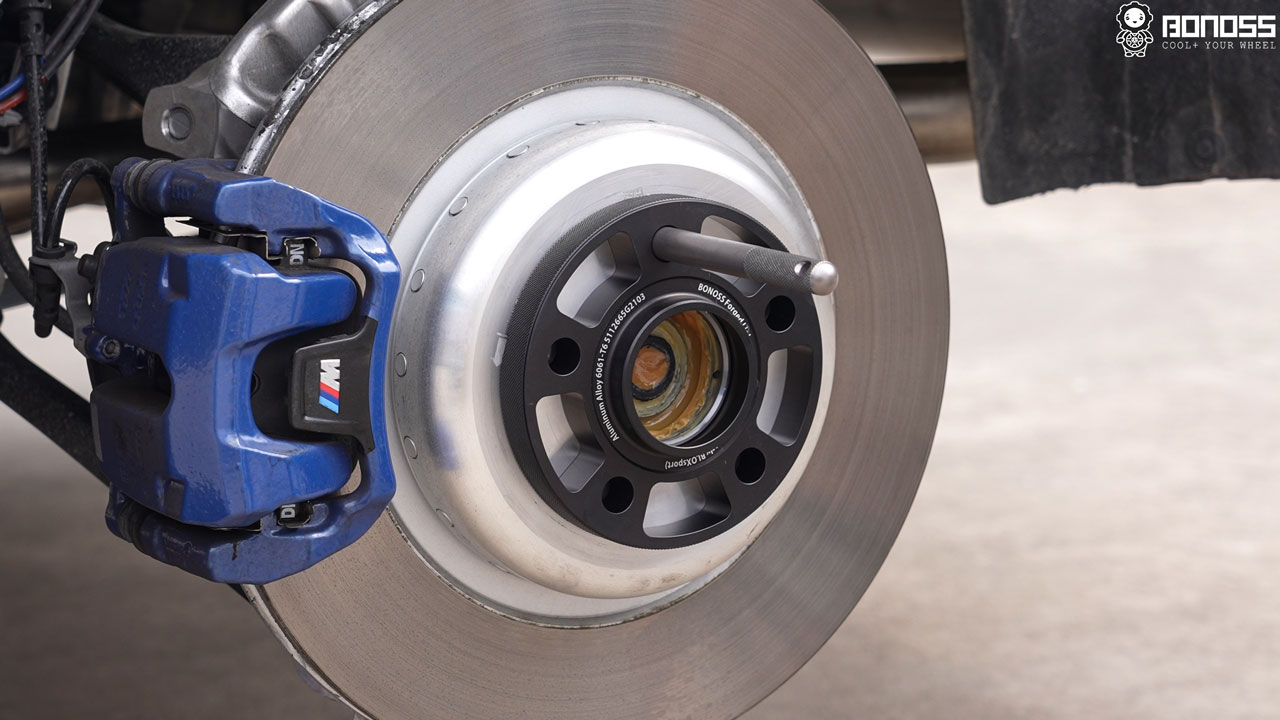
The Material of Wheel Spacers
When you find a reputable store, take a moment to see whether the store you’re buying from is confidently showing the performance data. At this time, Tensile Strength and Yield Strength are two very useful features when choosing safe wheel spacers. Since these features usually represent the upper limit of the stress that can be applied, in other words, how safe are wheel spacers. Tensile strength is the maximum tensile load a material can withstand prior to fracture. It is the amount of load or stress that can be handled by a material before it stretches and breaks. So, if a wheel spacer has high tensile strength, it essentially means that it can resist a lot of tension before it breaks. Yield strength is very important for wheel spacers since it is the maximum stress that can be applied before it begins to change shape permanently. So, if a wheel spacer has high yield strength, it essentially means that it can resist a lot of tension before it breaks. BONOSS forged wheel spacers are safer and stronger: Tensile Strength≥310Mpa (AL6061-T6), Tensile Strength≥572Mpa (AL7075-T6), Yield Strength≥275Mpa (AL6061-T6), Yield Strength≥503Mpa (AL7075-T6), and the Tensile Strength of the cheap alternatives is approximately 125Mpa below. When facing bump and impact loads, higher tensile strength can bear greater forces without breaking.

